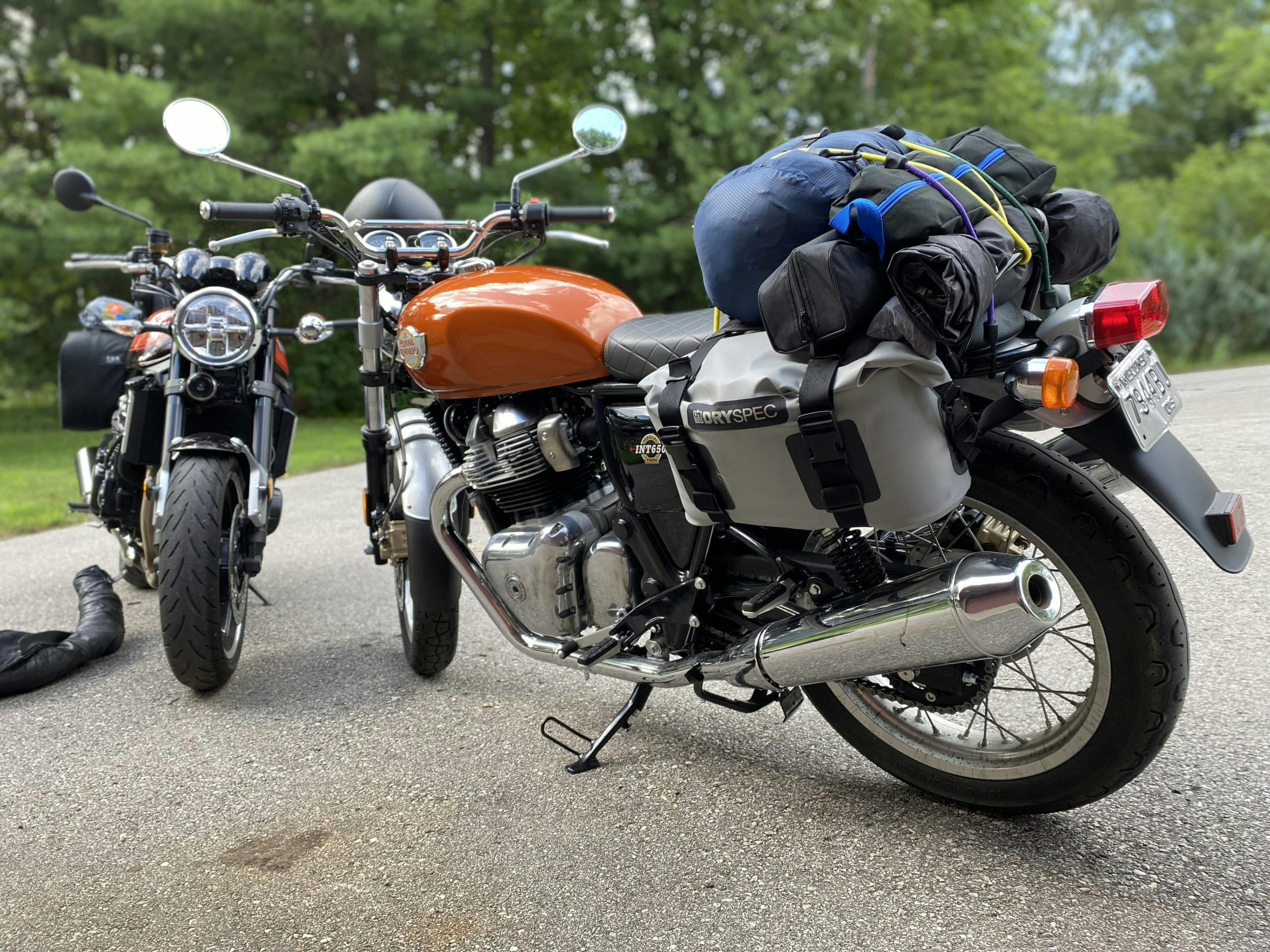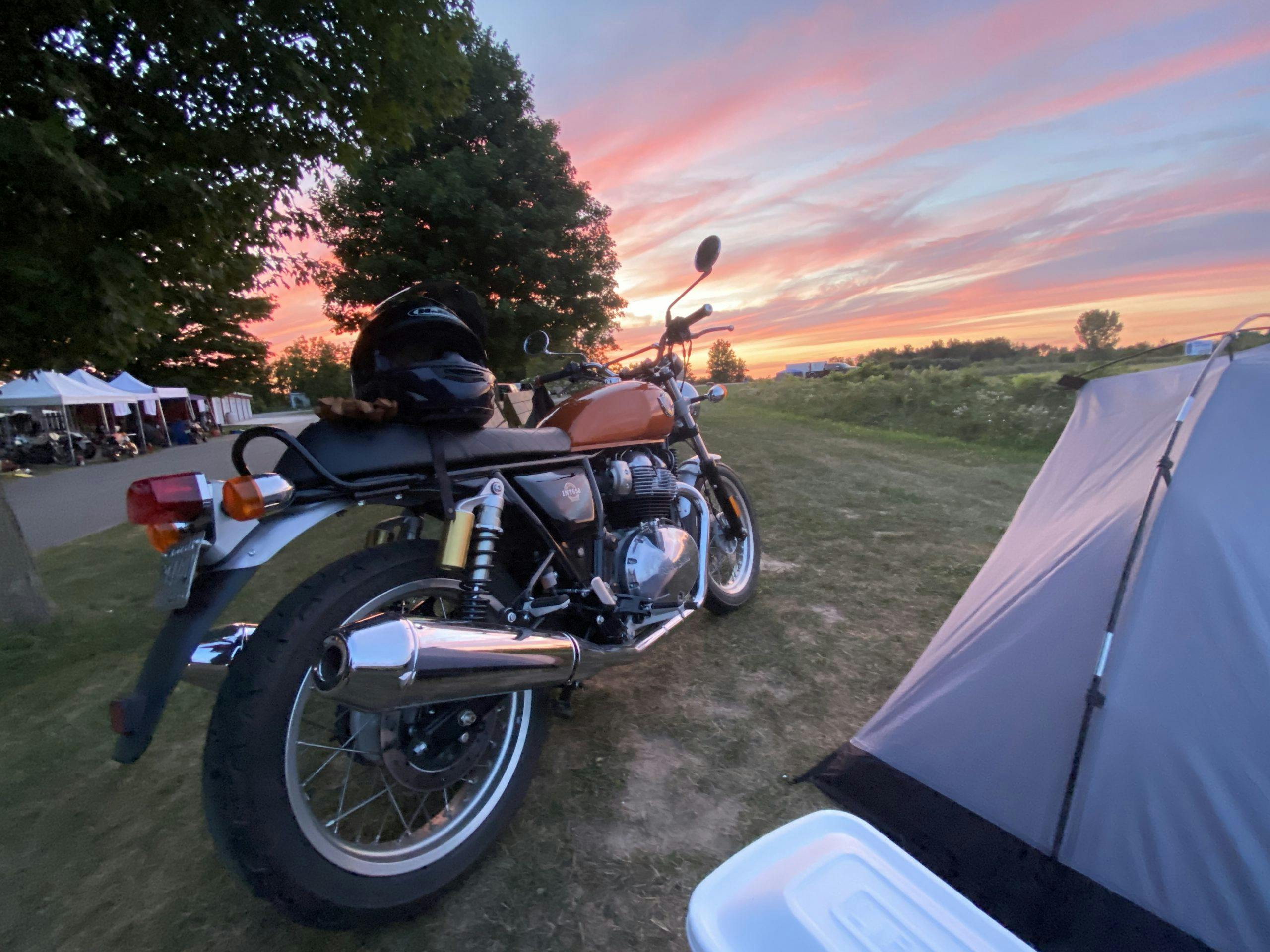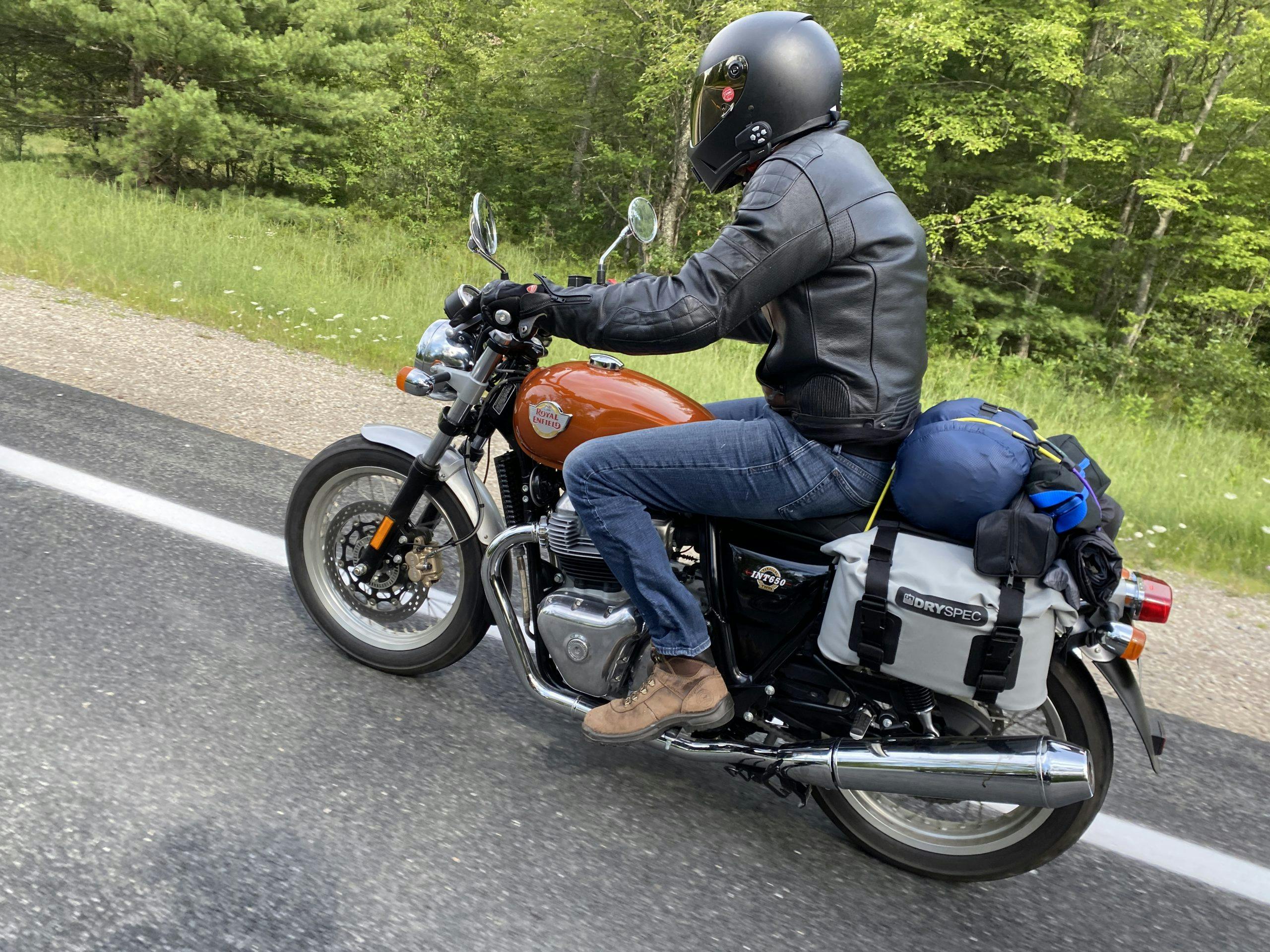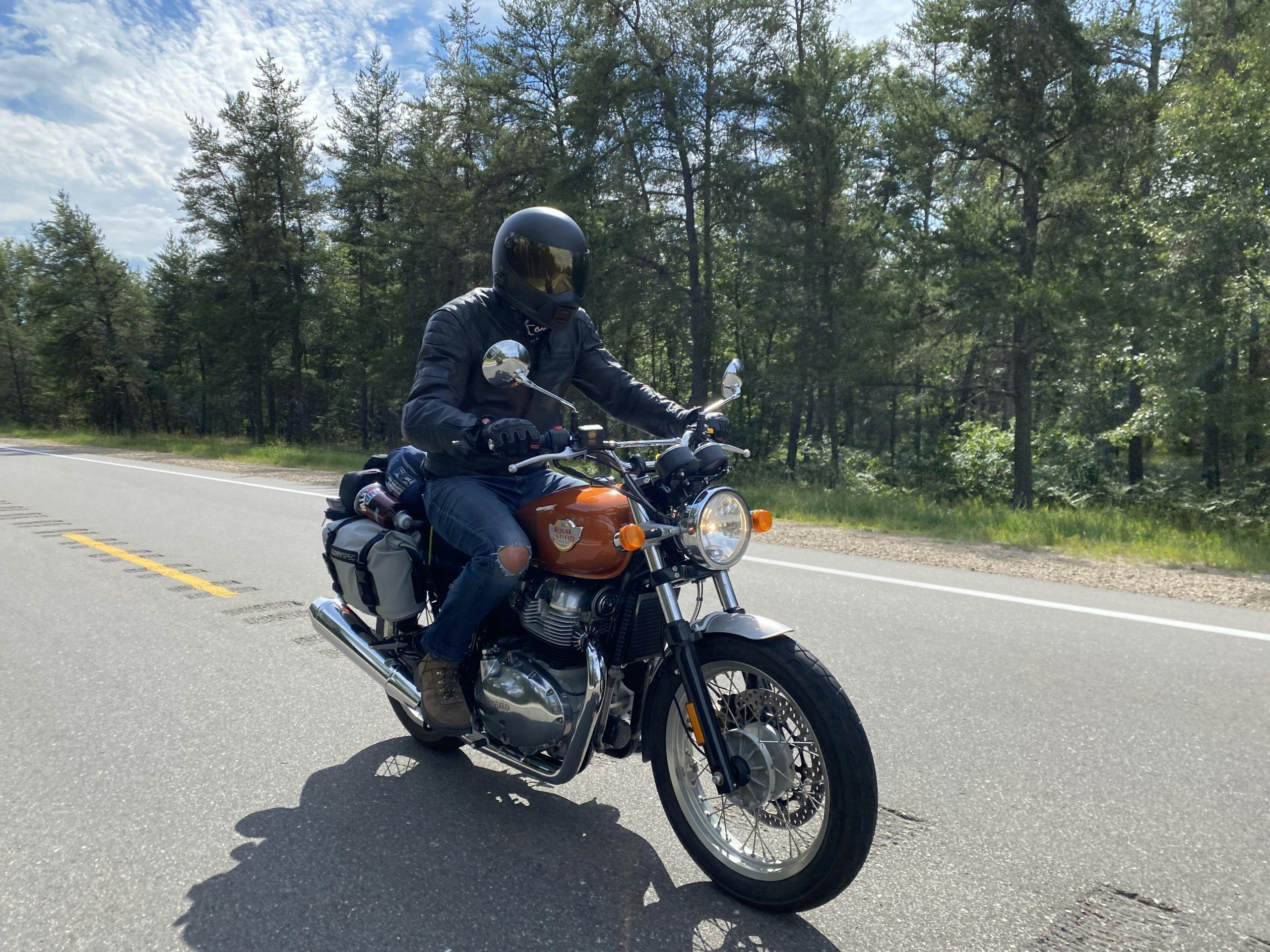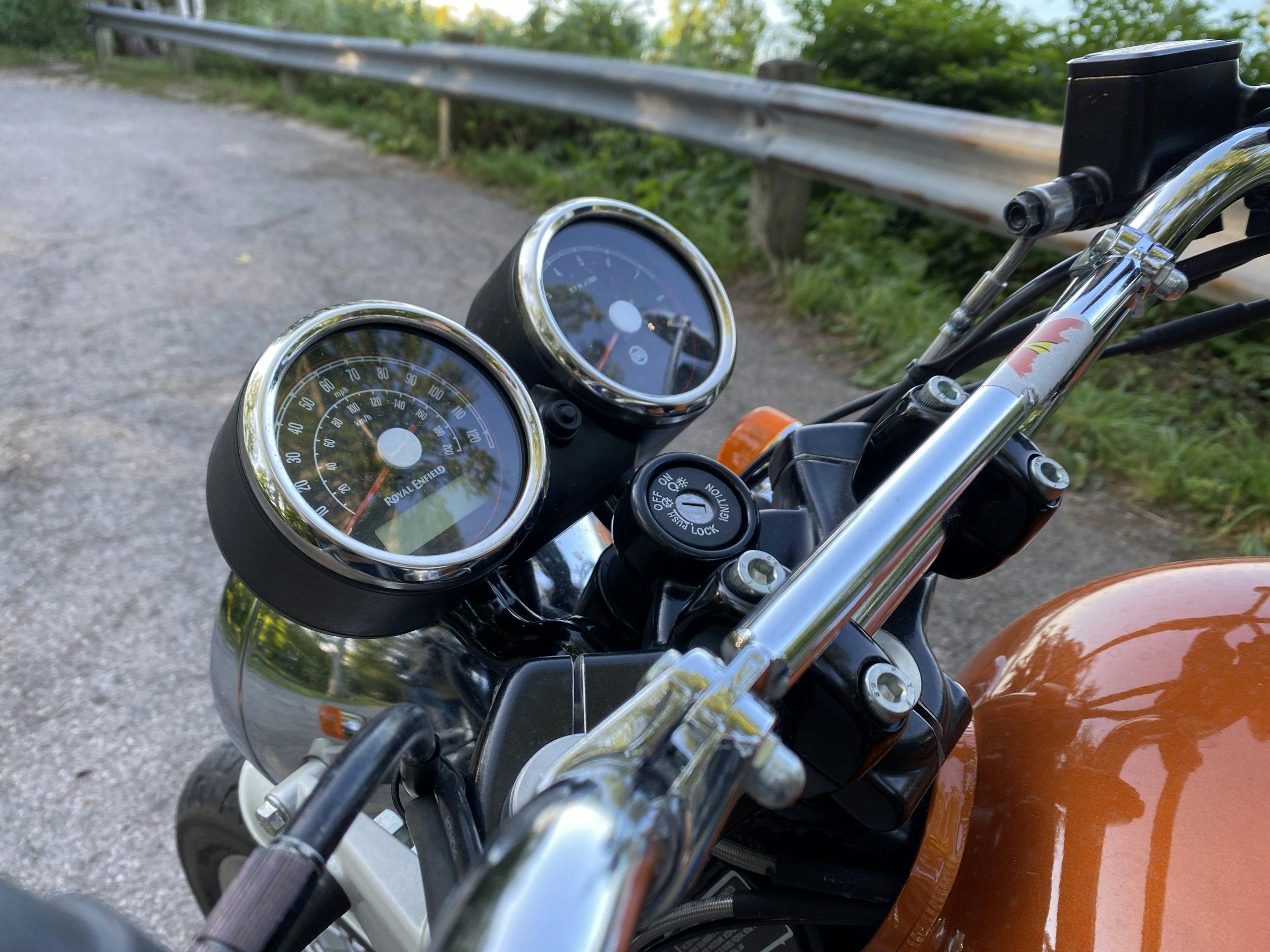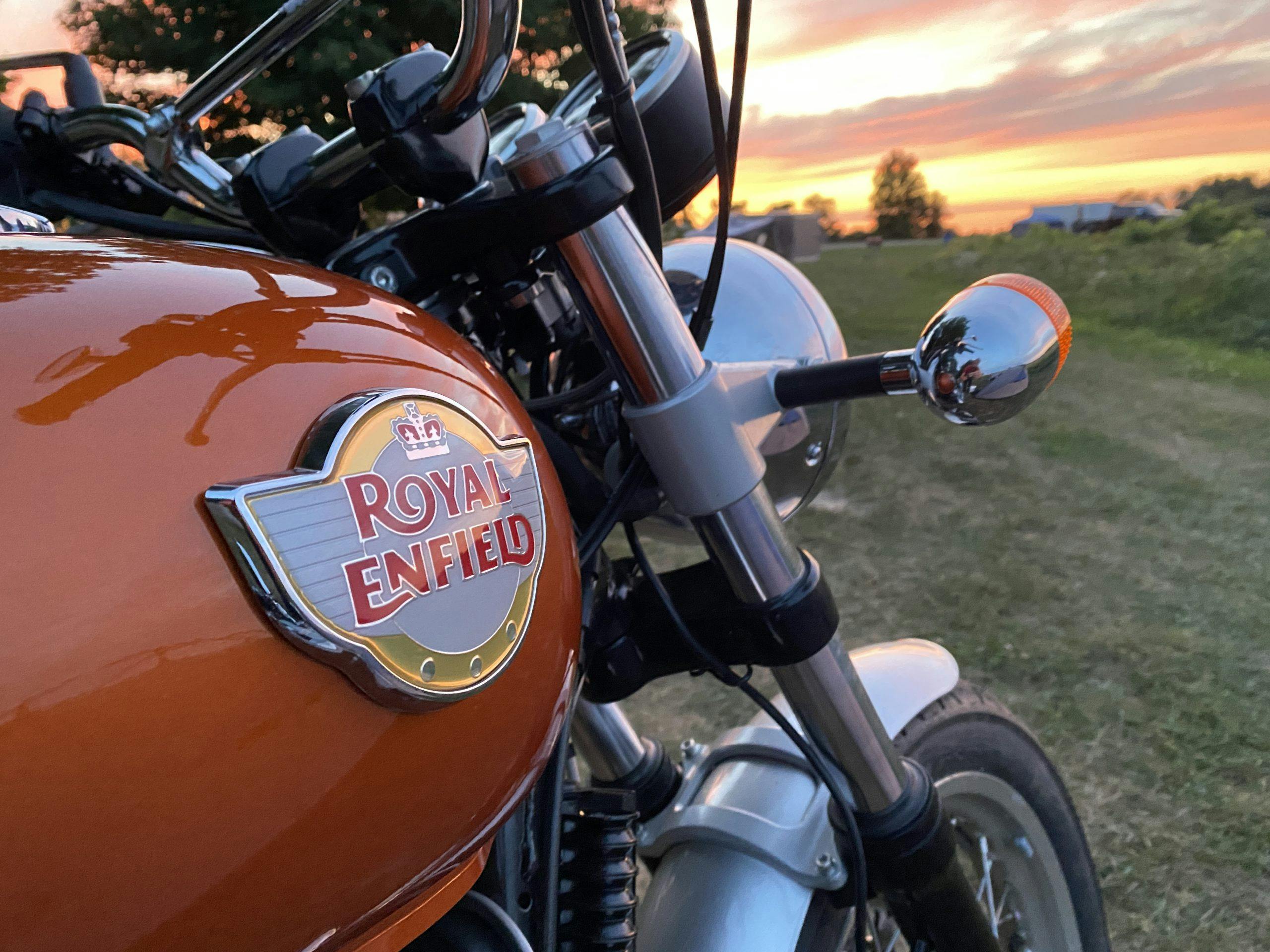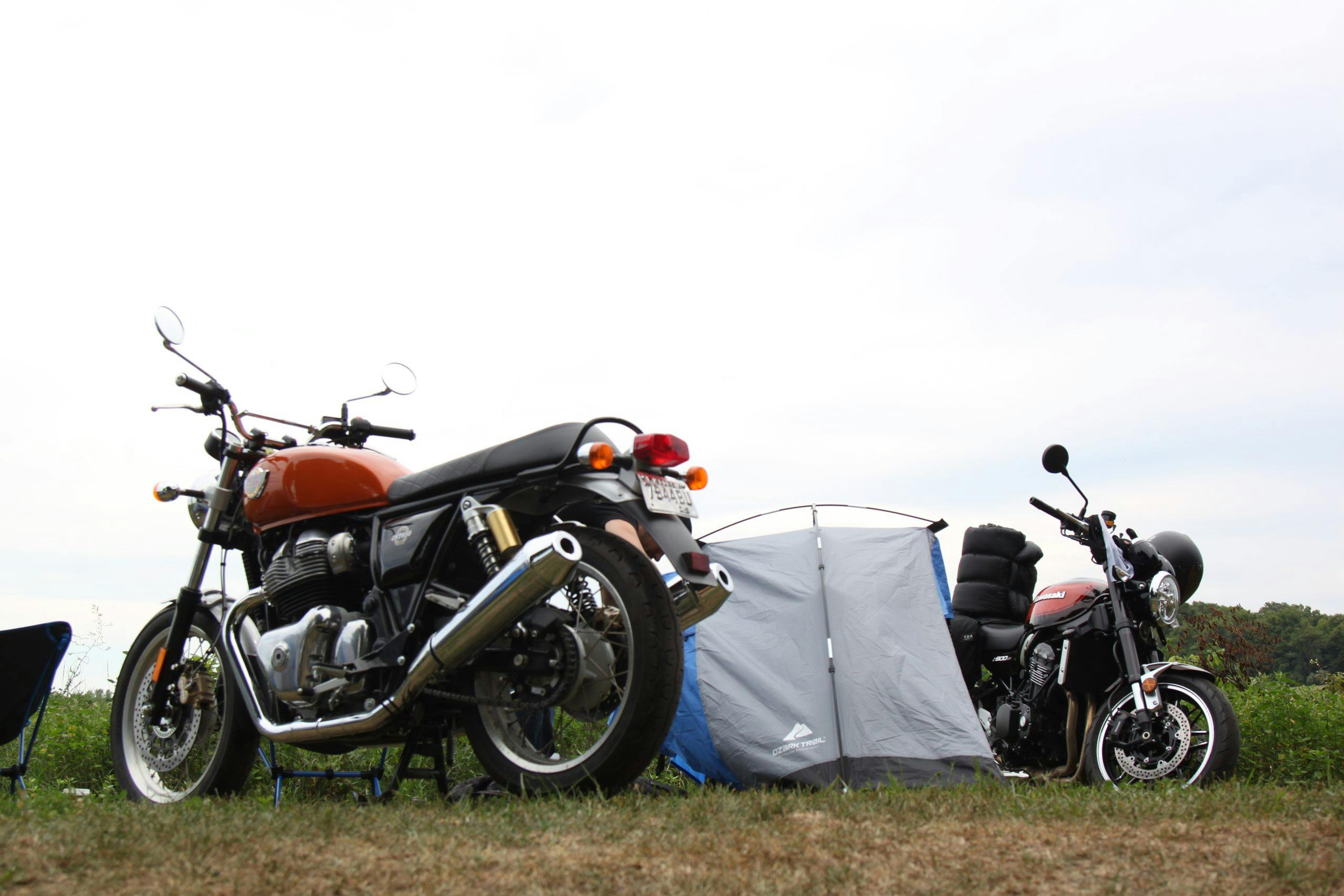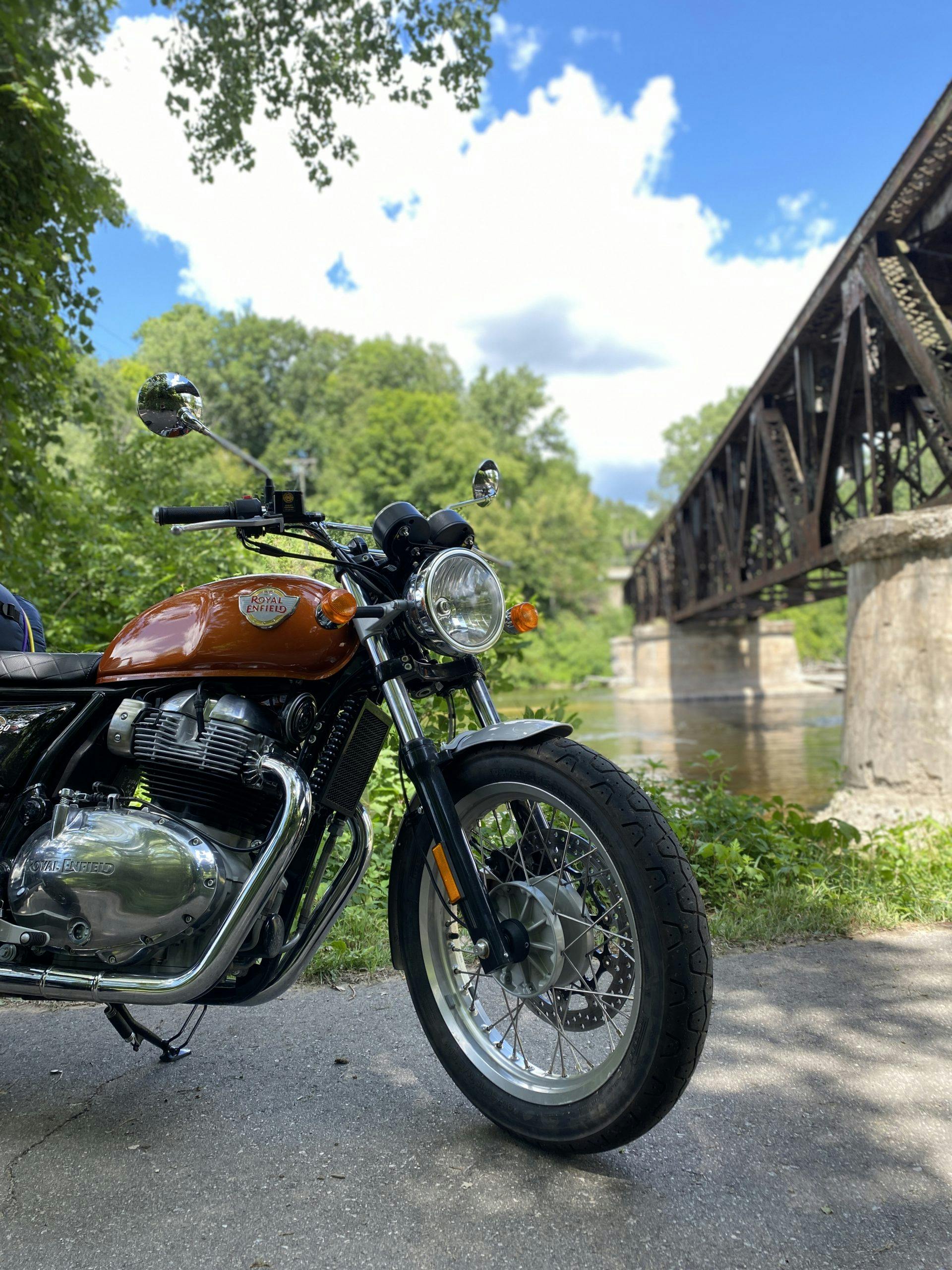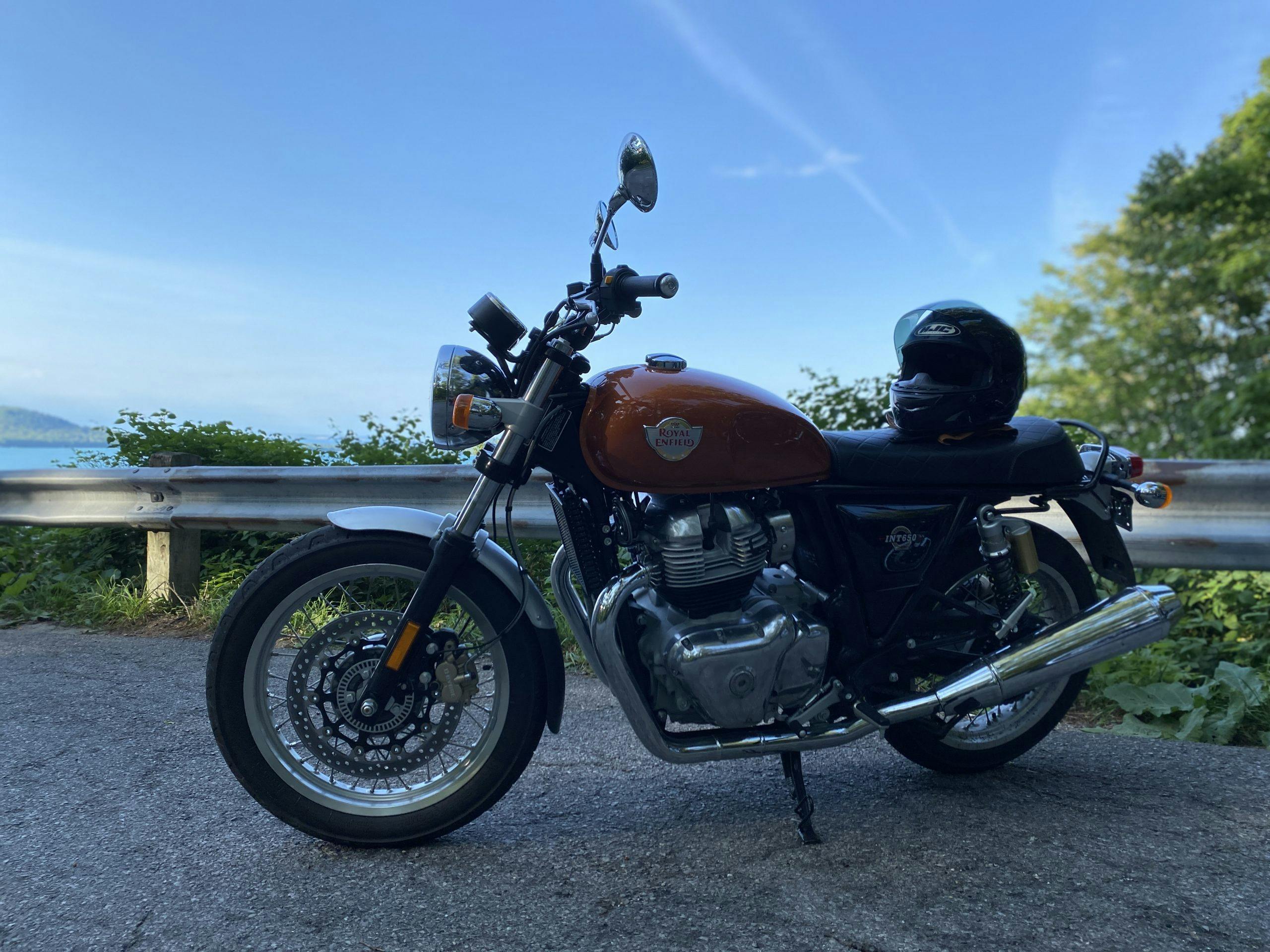Review: The Royal Enfield INT650 delivers on more than just nostalgia
The motorcycle market has been in a fit of heavy nostalgia over the last number of years, especially when it comes to medium-displacement non-sportbike machines. As an enthusiast of vintage vehicles, I never felt drawn to these retro-influenced offerings. If you want something that looks old, buy something old, right? After a couple of months of riding the Royal Enfield INT650, I’ve softened my stance a little.
Royal Enfield announced this machine and its sportier sister bike, the Continental GT, back in 2018 for the 2019 model year. We took a Continental GT for a short ride back when we highlighted five retro-themed motorcycles, but the differences between the Interceptor and the Continental are enough that it was worth spending some time this summer with the former.
The INT650 is the Royal Enfield’s modern spin on the classic Interceptor model and, like all bikes from this reborn vintage brand, it is built in India. The 650 nomenclature refers to the displacement of the twin-cylinder engine in cubic centimeters (it is actually 648, but rounding up is standard practice). If you prefer ‘Murican units, that’s just about 40 cubic inches.
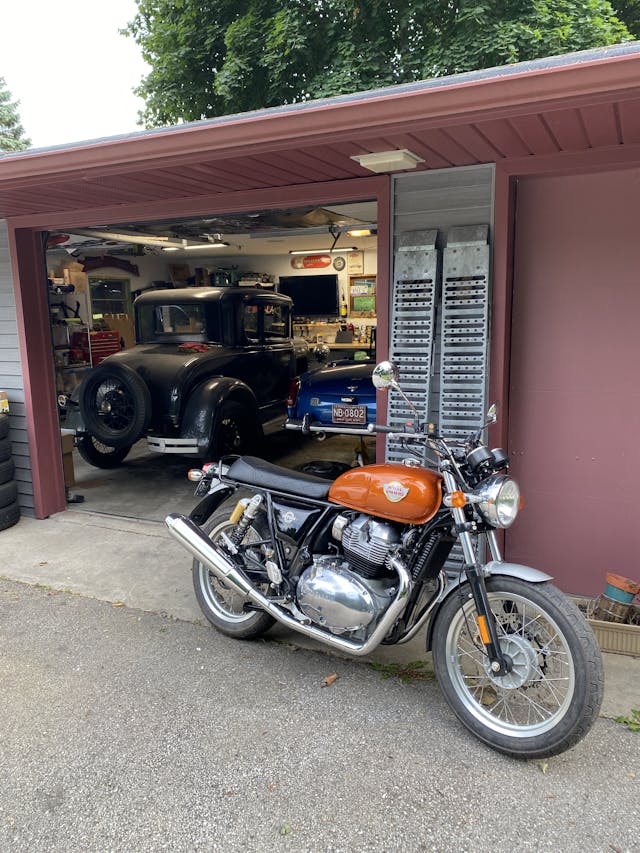
This bike represents a massive turnaround for Enfield, thanks to a major investment on the manufacturing side. The fit and finish is not on par with more established brands, but despite the modest price point of $5800, the Enfield is not a throwaway machine, contrary to what some bike fans assume based on Enfield’s early 2000s U.S. models. In fact, for most riders the INT is a perfect fit, which likely explains why this style of bike far outsells the sportbikes and other similarly aggressive and polarizing models.
The orange 2020 model I tested is virtually a carbon copy of the 2019 model, as there were no updates year over year aside from color options. The look is fully retro: long, flat seat; twin shocks for the rear suspension; and a mid-rise handlebar. These elements combine to create an open enough cockpit that tall riders likely won’t feel cramped and smaller riders will also be comfortable. In that same vein, the palatable cost should fit a wide range of budgets for riders shopping for a new pair of wheels.
The engine is air-cooled and fuel-injected, blending old-school tradition with modern efficiency to make 47 horsepower and 38 lb-ft of torque. Those aren’t earth-shattering numbers, but the fueling is smooth which makes that power feel a bit bigger than it is. The gearing in the six-speed transmission effectively multiplies the engines power, making the bike easy to ride and never without sufficient grunt. In fact, the power felt absolutely appropriate for the vintage vibe and easily propelled the bike to highway cruising speeds with passing muscle in reserve, though not as much as someone riding with a pillion or really loaded up with luggage might want. One touch I appreciated was the double-wall exhaust pipes that don’t discolor from heat. It sounds goofy, but an item like that can keep a budget-friendly motorcycle looking very sharp to passersby.
The traditional steel loop chassis, like the engine, has a vintage vibe. It rides like a twin-shock bike, which is to say that, when cornering and especially if at a spirited pace, the rear end has just enough wiggle to be unsettling if you aren’t expecting it. The shocks and forks are definitely an area where the budget-minded nature of this bike shows through. The damping is lacking both up front and in the rear, especially when you’re trying to push the bike through a curvy section of pavement.
The brakes, too, could be more refined. Stopping power was modern-bike good with the single front rotor that (again) plays into the vintage theme, but there is a reason so many machines feature dual disc front ends. The power was there, but the brakes could use more feel. An adjustable master cylinder and lever combination would be a nice upgrade. The ABS system was not intrusive and most welcome, and that is coming from someone who loves drum brakes with his whole heart.
The INT650’s true weak point, however, is the seat. That oh-so-stylish number that looks Instagram-perfect is crotch-numbing torture if you intend to use the bike for more than rips around town. I took the bike on a camping trip to a track 2.5 hours away from home and, despite packing my gear in a manner that gave me room to move around on the seat, it was tough to log a decent number of miles between stops. Great for sightseeing, but sometimes you just need to cover ground and get somewhere. Invest in a new seat or plan for regular stops.
Speaking of being out on the road, I logged just under 1000 miles on the Enfield over a few months here in Northern Michigan. It was an even 50/50 split between basic errand running and that moto-camping trip. The bike is happiest cruising side streets, but I found the 650 didn’t have quite the torque to squirt around with just a twist of the throttle at low rpm. Keep the revs above 3000 and it pulls everywhere just fine.
Controlling the bike from the medium-rise motocross-style handlebar was easy and the steering was neutral. The footpegs were just a bit further forward than I would have liked as a long-legged six-foot tall rider, but overall the position was classic and comfortable for bopping around town. A few friends tried the bike on for size in my driveway and felt the controls were about right for those 5’5″ to 5’11”. The seat was deceptively tall though, mainly due to the width of the bike. Short riders might not be able to plant two feet easily despite the seemingly approachable 31.2-inch seat height. The bike carries its 435 pounds well and is easy to control at a stop and slow speeds.
Throwing a pair of saddlebags on and hitting the local back roads put the INT in a spot where it didn’t seem so much at home, but it still held up its end of the deal. Vibration was minimal through the rider touch points, and with the exception of that torturous seat, both bike and rider were happy to log miles at a good pace. Having experience with a decade-old Triumph Bonneville, my left foot was comfortable smoothly clicking into the Enfield’s sixth gear. The Enfield has the power to do illegal speeds, but for extended periods of time the real sweet spot was right around 70 mph.
For the money, the INT is hard to beat if you need a stylish commuter or a bike for weekend adventures. Yes, it is fairly easy to spot how the Royal Enfield trimmed the build cost on the INT by cheapening the suspension, controls, and brakes, but a new bike with a three-year warranty including roadside assistance, for under $6000, should be an attractive proposition for someone looking to enter the motorcycle world. Even for an experienced rider, the 650 fits the bill for something fun to ride when the truly vintage bike just isn’t the right tool for the job. I even tackled some of Northern Michigan’s sandy dirt roads, and the INT dutifully went wherever I pointed it. That versatility is a great strength, although it’s no off-roader (nor is it meant to be).
When I rolled down it down driveway the first time, the INT650 had in front of it an uphill battle to win my heart. I own vintage machines and savor their vintage-ness. In my garage, we do not play dress-up. When folks say something has all the vintage feel and none of the problems, I throw up in my mouth a little. It only took a few weeks for my tune to change, at least this once. Royal Enfield got the character right, and the use case is perfectly sensible. I won’t abandon my “if you want an old bike, just buy an old bike” mantra, but if you like the look of the INT650, you’ll likely enjoy riding it too.
Pros: Royal Enfield got the character right. The price point makes it a no-brainer if a mid-sized moto fun machine is what you are after.
Cons: Seat is more akin to a torture device than a seat, and the suspension leaves capable riders wanting more.
Summary: A budget-friendly modern machine for a vintage bike lover who wants something to take on adventures without a second thought.
